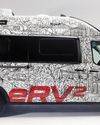
In 1962, John F. Kennedy told a large crowd at Rice Stadium in Houston, Texas, “We choose to go to the moon.” And we did, just seven years later.
Today, the National Aeronautics and Space Administration (NASA) is working alongside industry to ensure we not only return to the moon, but we use it as a springboard to Mars and beyond. With global firms like Boeing, Lockheed Martin, and Northrop Grumman providing resources to the Artemis Program, NASA is expected to land the first woman and next man on the lunar surface by 2024.
While Lockheed Martin will provide the space vehicle, The Orion, Boeing will supply the rocketry to propel the astronauts beyond Earth’s gravity and into deep space.
Mark Nappi, Boeing’s Space Launch Systems Director, told Innovation & Tech Today the company designed and built the first stage rocket and the Interim Cryogenic Propulsion Stage (ICPS).
“The Space Launch System uses upgraded solid rocket boosters and the RS-25 engines from the shuttle,” he said. “The stages are designed from the ground up to be evolvable – human-rated and able to support a variety of science, exploration, and defense missions – without having to re-invest in new infrastructure.”
Each of these functions will play a key role in NASA’s vision for deep space exploration while using the International Space Station (ISS) as a proving ground for technologies needed to support humans long-term in a weightless environment.
この記事は Innovation & Tech Today の 2020 Year-End Issue 版に掲載されています。
7 日間の Magzter GOLD 無料トライアルを開始して、何千もの厳選されたプレミアム ストーリー、9,000 以上の雑誌や新聞にアクセスしてください。
すでに購読者です ? サインイン
この記事は Innovation & Tech Today の 2020 Year-End Issue 版に掲載されています。
7 日間の Magzter GOLD 無料トライアルを開始して、何千もの厳選されたプレミアム ストーリー、9,000 以上の雑誌や新聞にアクセスしてください。
すでに購読者です? サインイン

The Fitbark 2: Pet Wellness at Your Fingertips!
Track Your Best Friend’s Health Like Never Before

AI in Hollywood
Actors Reaching Stardom With Al

American Manufacturing
Women in the Lone Star State

Embracing the Sun
Remarkable Advancements in LightYear Solar-Powered Cars

Revolutionizing Mobility
Advancements and Challenges of Al in Self-Driving Cars

Electric-Powered Adventures
A Look Into the Zero Emission Winnebago eRV2

Looking Beyond Medicine
How VR Technology is Changing the Pediatric Experience

POWERING FORWARD
Navigating the World of Electric Vehicle Charging

Generative Artificial Intelligence in K-12 Education
Balancing Benefits, Concerns, and Ethical Use

Electrifying the Future
The Evolution of Electric Vehicle Infrastructure